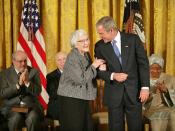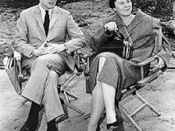Although the matters such as racism or lack of education may be considered very serious subjects, Harper Lee has some humor in her book To Kill a Mockingbird. It shouldn't mean that she was uncritical of such matters as prejudice or a poor educational system, but that she is implying her main point particularly. Interestingly, she chose her narrator (the book is written in first-person narrative) to be a 6 years-old girl named Scout, full of curiosity and excitement for adventure. Scout is not a reliable narrator, yet through her words it's easier for a reader to make up his own opinion about those issues; she doesn't judge the events in the story but only tells the side she witnesses. Also, her lack of understanding sets the reader guessing about what other characters are experiencing or what will occur later in the novel. Similarly, the author's descriptive paragraphs foreshadow the outcome of the prior situations.
Furthemore, Harper Lee portrays humor with tragedy of the 1930s decade: time of depression, sexism and racism. For instance, when Scout scares away a mob wanting to lynch the defendant in one of her father's major trials, it sounds hilarious but there is a deeper understanding of this event. Scout's father said: "So it took an eight-year-old to bring 'em to their senses...that proves something - that a gang of wild animals can be stopped, simply because they're still human." Such a vivid explanation sets the reader to think more critically about the theme than just quickly go through the chapters of the book. In all, Lee does portray a lot of important issues in her story and advocates them through the personal experiences of the narrator. The book, though only fiction, reflects many realistic problems in society at that time period; however, it...



I like it
having read the book b4 i feel u know wat ur talking about but try to talk more about the racial perspective and the title itself
1 out of 1 people found this comment useful.